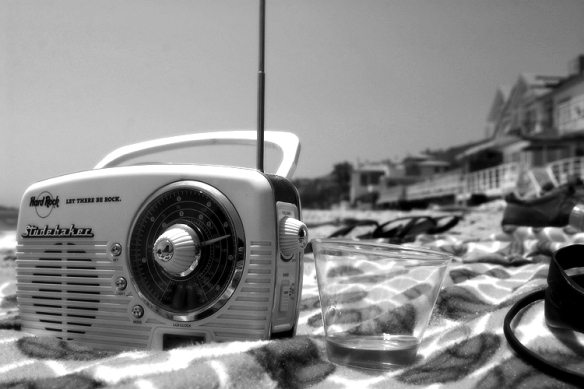The Radio: Before and After by: Natalia Bosch and Carla Astacio
Radio: Communication system using electromagnetic waves that spread throughout space.
A brief look at Radio’s history:
The Italian electrical engineer and inventor, Guglielmo Marconi, is universally known as the inventor of the radio. In 1896, he managed to transmit signals from a distance of 1.6 km. and recorded his first English patent. In 1897 transmitted signals from the shore to a boat to 29 km. offshore. Two years later succeeded in establishing a commercial communication between England and France can operate regardless of weather conditions.
In recognition of his work in the field of wireless telegraphy, Marconi shared the 1909 Nobel Prize in Physics with Karl Ferdinand Braun German physicist. Although this was not their original purpose, suddenly thought of the possibility of using radio as a medium of mass communication. The idea was tested on November 2, 1920, when the station KDKA in Pittsburgh broadcast the election of U.S. President Warren G. Harding, his message was heard by 1,000 people.
Advances in electronics became possible to manufacture cheaper new radios. The scale and success of the medium as a communication vehicle gave way to a new business, commercial radio. In 1925 there were about 600 stations spread around the world and in 1960 the number reached 10,000.
Equipment needed to mount a radio production:
Computer – used to record the announcers and edit your programs, provided you have a very fast processor and at least 512 megabytes of RAM.
Audio card – this is vital to the radio studio, The sound card is a device that connects to the computer’s motherboard, or it may be integrated into it. Play music, voice or audio signal. A sound card can be connected speakers, headphones, microphones, instruments, etc..
Console (mixer) – serve as a kind of ‘mixer’ for 8 or 10 channels with integrated equalizer.
Speakers – Need flat rate monitors, not to amplify the frequency.
Microphones – are very important to the radio station, even more if you have many programs that are live.
Headphones – for speakers and guests so they can listen to the radio.
Computer Programming role in Radio
The term wireless network is used in computing to designate the connection of nodes without requiring a physical connection (wire), it is by means of electromagnetic waves. The transmission and reception is performed through ports.
One of its main advantages is remarkable in costs by eliminating all the Ethernet cable and physical connections between nodes, but also has a significant disadvantage because for this type of network security should have a much more demanding and robust prevent intruders.
Websites and Applications to hear and produce radio programs:
- Pandora Internet Radio
- iTunes
- Web Radio (http://www.radio-directory.com/)
- Jango (http://www.jango.com/)
- BBC Radio (AM; http://www.bbc.co.uk/radio/)
- Listen Radio Online (https://chrome.google.com/webstore) – Application for your Google Chrome page.
- Television Fanatic – Application (toolbar; http://www.televisionfanatic.com/index.jhtml) can enjoy various other things with this application.
Not only do they have the availability of online radio listening, but you can also create your own radio show on the web with the right programs.
Listen2myradio is an internet radio, video streaming and hosting service websites founded by WebCode LTD (now MediaHosting LTD) in 2006. The most common use is to create listen2myradio or listen to Internet radio stations, but also video footage exists. Most stations are amateur DJ’s listen2myradio starting in the industry, but some traditional radio stations also use the service to expand its presence on the Web. For broadcasting users can register either for free accounts supported by visual ads or paid subscriptions without ads and with a range of additional features such as unlimited bandwidth and AutoDJ. For website hosting subscriptions currently pay only available.Listen2myradio was named one of the best websites of 2006 by the Israeli online newspaper Ynet greater.
To start your internet radio Subscribe our http://www.listen2myradio.com. You have to have a program and prior to broadcast and record, if not so you can download and install Virtual Dj: http://www.youtube.com/watch?v=T_tpNFfZj10&feature=channel_video_title this will help you have all the necessary equipment to transmit a radio program on the web.

